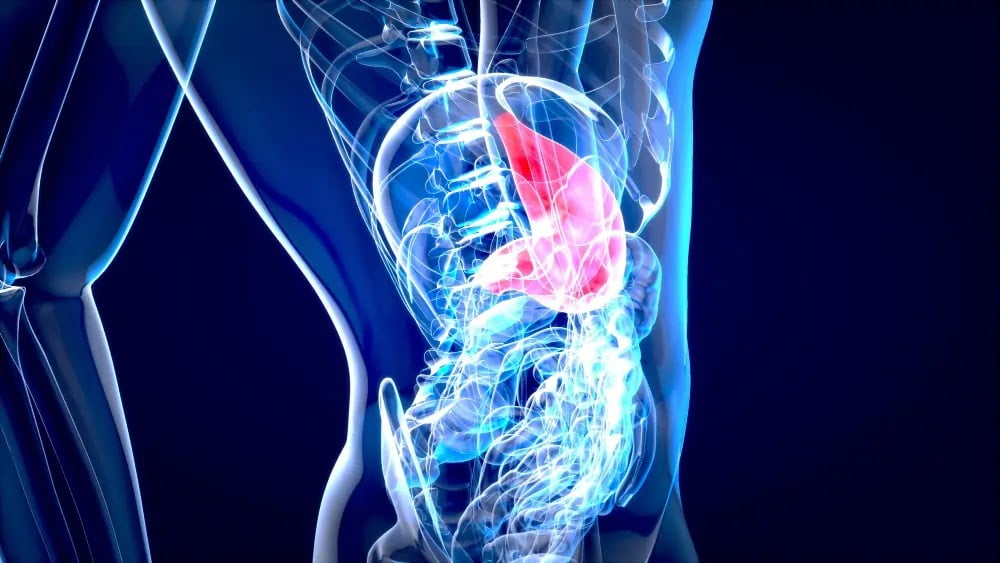
If you have diabetes, you know how important it is to monitor your blood glucose (sugar) levels regularly. However, pricking your finger several times a day can be painful, inconvenient, and inaccurate. That’s why many people are turning to continuous glucose monitoring devices, or CGMs, to track their blood glucose levels throughout the day and night.
What is a continuous glucose monitoring device?
A continuous glucose monitoring device is a small wearable device that measures your blood glucose levels every few minutes, using a tiny sensor inserted under your skin. The sensor sends the readings to a receiver, which can be a handheld device, a smartphone app, a smartwatch, or an insulin pump. The receiver displays your current blood glucose level, as well as trends, alerts, and alarms. You can also share your data with your healthcare provider, caregiver, or family members remotely.
What are the benefits of using a continuous glucose monitoring device?
A continuous glucose monitoring device can help you manage your diabetes better by providing you with more information and insights about your blood glucose levels. Some of the benefits of using a CGM are:
– You can see how your blood glucose levels change throughout the day and night, and how they are affected by food, exercise, medication, and other factors.
– You can avoid or reduce the frequency of finger pricks, which can be painful and inconvenient.
– You can get alerts and alarms when your blood glucose levels are too high or too low, or when they are changing rapidly, so you can take action to prevent or treat hypoglycemia (low blood sugar) or hyperglycemia (high blood sugar).
– You can improve your time in range, which is the percentage of time that your blood glucose levels are within your target range. Studies have shown that increasing your time in range can lower your A1C, which is a measure of your average blood glucose level over the past three months, and reduce the risk of diabetes complications.
– You can access additional features and functions, such as predictive algorithms, trend arrows, glucose reports, and graphs, that can help you understand your glucose patterns and make informed decisions about your diabetes management.
What are the types of continuous glucose monitoring devices?
There are different types of continuous glucose monitoring devices available, depending on your needs and preferences. The main types are:
– Intermittent-scan continuous glucose monitoring devices: These devices require you to scan the sensor with the receiver to get a blood glucose reading. They do not display your blood glucose level continuously, but they store the data for up to eight hours, so you can see your glucose history when you scan. They also have optional blood sugar alarms that can alert you when your glucose levels are out of range. An example of this type of device is the Abbott Freestyle Libre 2.
– Real-time continuous glucose monitoring devices: These devices display your blood glucose level continuously on the receiver, without the need to scan the sensor. They also have real-time alerts and alarms that can notify you when your glucose levels are too high or too low, or when they are changing rapidly. Some of these devices can also pair with your phone or smartwatch, so you can see your glucose data on different devices. An example of this type of device is the Dexcom G6.
– Long-term continuous glucose monitoring devices: These devices have a sensor that can last for up to 90 days, instead of the usual 10 to 14 days. They also have a transmitter that is implanted under your skin, instead of being attached to the sensor. They display your blood glucose level continuously on the receiver and have real-time alerts and alarms. An example of this type of device is the Eversense CGM System.
How to choose the best continuous glucose monitoring device for you?
The best continuous glucose monitoring device for you depends on several factors, such as:
– Your personal preferences and lifestyle: You may prefer a device that is discreet, easy to use, comfortable, durable, waterproof, compatible with your phone or smartwatch, or has other features that suit your needs.
– Your diabetes management goals: You may want a device that can help you improve your time in range, lower your A1C, prevent or treat hypoglycemia or hyperglycemia, or achieve other outcomes that are important to you.
– Your health care provider’s recommendations: You may need a device that can provide you with accurate and reliable data, that can share your data with your health care provider remotely, or that can integrate with your insulin pump or other diabetes devices.
– Your insurance coverage and affordability: You may need to check if your insurance plan covers the cost of the device, the sensors, the transmitters, and the receivers, or if you need to pay out of pocket. You may also need to compare the prices and features of different devices to find the best value for your money.
How to use a continuous glucose monitoring device?

To use a continuous glucose monitoring device, you need to follow these steps:
– Insert the sensor: You need to insert the sensor under your skin, usually on your abdomen or upper arm, using an applicator device. The sensor has a small needle that goes into your interstitial fluid, which is the fluid that surrounds your cells. The needle is then removed, leaving a thin wire that measures your glucose levels. The sensor is attached to a patch that sticks to your skin.
– Attach the transmitter: You need to attach the transmitter to the sensor, either by snapping it on or by implanting it under your skin. The transmitter sends the glucose readings to the receiver wirelessly.
– Set up the receiver: You need to set up the receiver, which can be a handheld device, a smartphone app, a smartwatch, or an insulin pump. You need to pair the receiver with the transmitter and customize your settings, such as your target range, your alerts and alarms, and your data-sharing options.
– Calibrate the device: You may need to calibrate the device, which means to check the accuracy of the sensor readings by comparing them with a finger prick blood glucose test. Some devices require calibration once or twice a day, while others do not require calibration at all.
– Scan or view the device: You need to scan or view the device to see your current blood glucose level, as well as your glucose history, trends, alerts, and alarms. Depending on the type of device, you may need to scan the sensor with the receiver, or just look at the receiver screen. You can also access additional features and functions, such as predictive algorithms, trend arrows, glucose reports, and graphs, that can help you understand your glucose patterns and make informed decisions about your diabetes management.
How to take care of your continuous glucose monitoring device?
To take care of your continuous glucose monitoring device, you need to follow these tips:
– Change the sensor regularly: You need to change the sensor every 10 to 14 days, or every 90 days, depending on the type of device. You need to remove the old sensor, dispose of it safely, and insert a new sensor in a different site. You also need to attach a new transmitter or recharge the old one, if needed.
– Keep the device clean and dry: You need to keep the device clean and dry and avoid getting dirt, dust, water, sweat, lotion, soap, or other substances on the sensor, the transmitter, or the receiver. You can use a mild soap and water to clean the device and dry it with a soft cloth. You can also use a waterproof cover or tape to protect the device from water or moisture.
– Store the device properly: You need to store the device properly and avoid exposing it to extreme temperatures, humidity, sunlight, magnets, metal detectors, x-rays, or other sources of interference. You can use a case or a pouch to store the device and keep it away from children and pets.
– Check the device regularly: You need to check the device regularly, and make sure that it is working properly, that the battery is charged, that the connection is stable, that the data is accurate, and that the alerts and alarms are audible or visible. You can also check the device manual or the manufacturer’s website for troubleshooting tips, or contact customer service for support.
Conclusion
A continuous glucose monitoring device is a useful tool that can help you monitor your blood glucose levels more easily and effectively. It can provide you with more information and insights about your glucose patterns, and help you prevent or treat hypoglycemia or hyperglycemia. It can also help you improve your time in range, lower your A1C, and reduce the risk of diabetes complications.
There are different types of continuous glucose monitoring devices available, and you can choose the best one for you based on your preferences, goals, recommendations, coverage, and affordability. To use a continuous glucose monitoring device, you need to insert the sensor, attach the transmitter, set up the receiver, scan or view the device, and take care of the device. You can also share your data with your healthcare provider, caregiver, or family members remotely, and get feedback and guidance on your diabetes management.



 Afrikaans
Afrikaans Albanian
Albanian Amharic
Amharic Arabic
Arabic Armenian
Armenian Azerbaijani
Azerbaijani Basque
Basque Belarusian
Belarusian Bengali
Bengali Bosnian
Bosnian Bulgarian
Bulgarian Catalan
Catalan Cebuano
Cebuano Chichewa
Chichewa Chinese (Simplified)
Chinese (Simplified) Chinese (Traditional)
Chinese (Traditional) Corsican
Corsican Croatian
Croatian Czech
Czech Danish
Danish Dutch
Dutch English
English Esperanto
Esperanto Estonian
Estonian Filipino
Filipino Finnish
Finnish French
French Frisian
Frisian Galician
Galician Georgian
Georgian German
German Greek
Greek Gujarati
Gujarati Haitian Creole
Haitian Creole Hausa
Hausa Hawaiian
Hawaiian Hebrew
Hebrew Hindi
Hindi Hmong
Hmong Hungarian
Hungarian Icelandic
Icelandic Igbo
Igbo Indonesian
Indonesian Irish
Irish Italian
Italian Japanese
Japanese Javanese
Javanese Kannada
Kannada Kazakh
Kazakh Khmer
Khmer Korean
Korean Kurdish (Kurmanji)
Kurdish (Kurmanji) Kyrgyz
Kyrgyz Lao
Lao Latin
Latin Latvian
Latvian Lithuanian
Lithuanian Luxembourgish
Luxembourgish Macedonian
Macedonian Malagasy
Malagasy Malay
Malay Malayalam
Malayalam Maltese
Maltese Maori
Maori Marathi
Marathi Mongolian
Mongolian Myanmar (Burmese)
Myanmar (Burmese) Nepali
Nepali Norwegian
Norwegian Pashto
Pashto Persian
Persian Polish
Polish Portuguese
Portuguese Punjabi
Punjabi Romanian
Romanian Russian
Russian Samoan
Samoan Scottish Gaelic
Scottish Gaelic Serbian
Serbian Sesotho
Sesotho Shona
Shona Sindhi
Sindhi Sinhala
Sinhala Slovak
Slovak Slovenian
Slovenian Somali
Somali Spanish
Spanish Sundanese
Sundanese Swahili
Swahili Swedish
Swedish Tajik
Tajik Tamil
Tamil Telugu
Telugu Thai
Thai Turkish
Turkish Ukrainian
Ukrainian Urdu
Urdu Uzbek
Uzbek Vietnamese
Vietnamese Welsh
Welsh Xhosa
Xhosa Yiddish
Yiddish Yoruba
Yoruba Zulu
Zulu